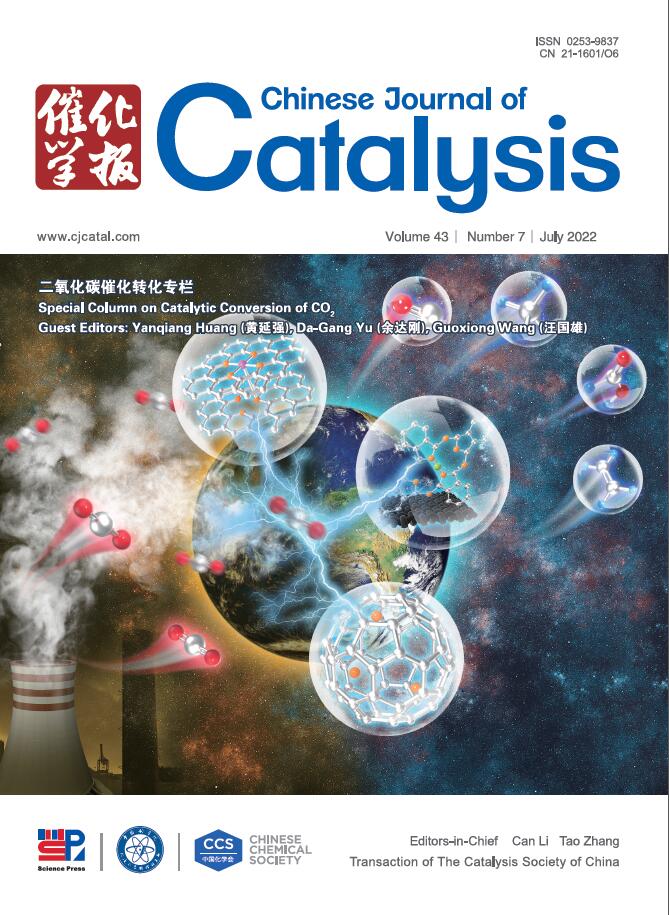Revealing the regulatory mechanism of built-in electric field in defective mesoporous MIL-125(Ti)@BiOCl S-scheme heterojunctions toward optimized photocatalytic performance
IF 17.7
1区 化学
Q1 CHEMISTRY, APPLIED
引用次数: 0
Abstract
The rational configuration of built-in electric field (IEF) in heterogeneous materials can significantly optimize the band structure to accelerate the separation of photogenerated charge carriers. However, the strength modulation of IEF formed by various materials has an uncertain enhancing effect on the separation of photogenerated carriers. Herein, a mesoporous MIL-125(Ti)@BiOCl S-scheme heterojunction with controllable IEF is prepared by green photoreduction reaction to investigate the relationship between IEF, microstructure, and photocatalytic activity. Moreover, the corresponding results demonstrate the MIL-125(Ti)@BiOCl effectively regulates the IEF strength through controlling the concentration of ligand defects, thereby optimizing the band structure and improving the efficiency of photogenerated charge separation. The optimized IEF significantly enhances the photocatalytic degradation performance of mesoporous MIL-125(Ti)-3@BiOCl towards tetracycline, with a k value of 0.07 min–1, which are approximately 5.5 and 4.7 times greater than that of BiOCl (0.0127 min–1) and MIL-125(Ti)-3 (0.015 min–1). These findings provide a new pathway for regulating IEF within MOF-based heterojunctions, and offer new insights into the intrinsic correlations between defect structure, IEF, and photocatalytic activity.
揭示缺陷介孔MIL-125(Ti)@BiOCl S-scheme异质结内建电场对优化光催化性能的调控机制
在非均质材料中合理配置内建电场(IEF)可以显著优化带结构,加速光生载流子的分离。然而,各种材料形成的IEF的强度调制对光生载流子的分离有不确定的增强作用。本文通过绿色光还原反应制备了具有可控IEF的介孔MIL-125(Ti)@BiOCl s型异质结,研究了IEF、微观结构和光催化活性之间的关系。此外,相应的结果表明MIL-125(Ti)@BiOCl通过控制配体缺陷的浓度有效调节IEF强度,从而优化带结构,提高光生电荷分离效率。优化后的IEF显著提高了介孔MIL-125(Ti)-3@BiOCl对四环素的光催化降解性能,k值为0.07 min-1,分别是BiOCl (0.0127 min-1)和MIL-125(Ti)-3 (0.015 min-1)的5.5和4.7倍。这些发现为mof基异质结中IEF的调控提供了新的途径,并为缺陷结构、IEF和光催化活性之间的内在相关性提供了新的见解。
本文章由计算机程序翻译,如有差异,请以英文原文为准。
求助全文
约1分钟内获得全文
求助全文
来源期刊

Chinese Journal of Catalysis
工程技术-工程:化工
CiteScore
25.80
自引率
10.30%
发文量
235
审稿时长
1.2 months
期刊介绍:
The journal covers a broad scope, encompassing new trends in catalysis for applications in energy production, environmental protection, and the preparation of materials, petroleum chemicals, and fine chemicals. It explores the scientific foundation for preparing and activating catalysts of commercial interest, emphasizing representative models.The focus includes spectroscopic methods for structural characterization, especially in situ techniques, as well as new theoretical methods with practical impact in catalysis and catalytic reactions.The journal delves into the relationship between homogeneous and heterogeneous catalysis and includes theoretical studies on the structure and reactivity of catalysts.Additionally, contributions on photocatalysis, biocatalysis, surface science, and catalysis-related chemical kinetics are welcomed.
 求助内容:
求助内容: 应助结果提醒方式:
应助结果提醒方式:


